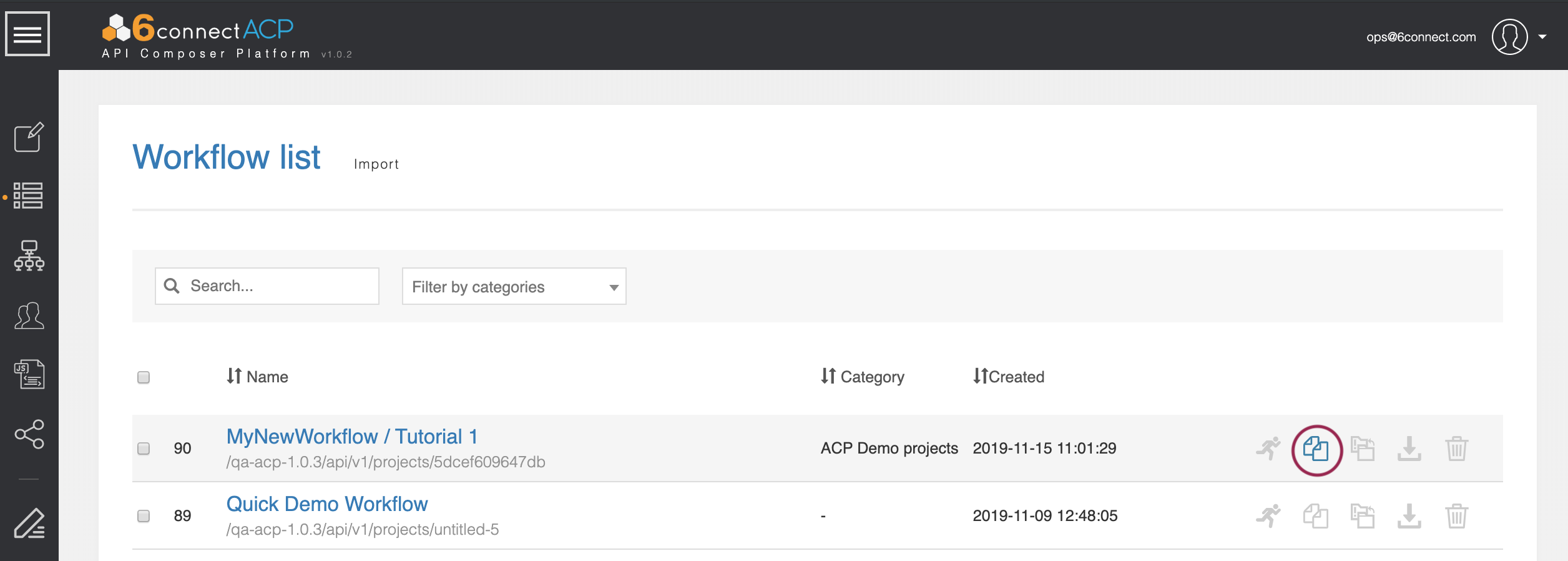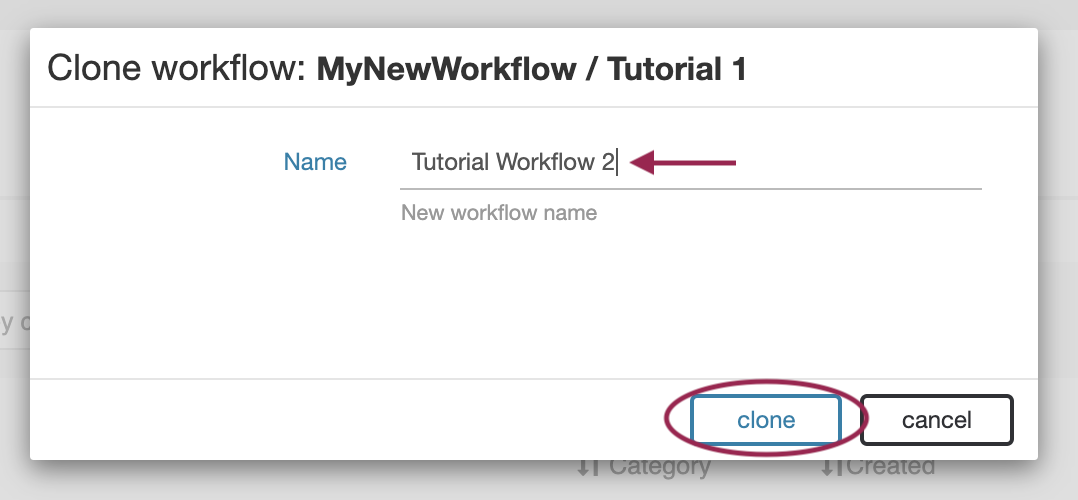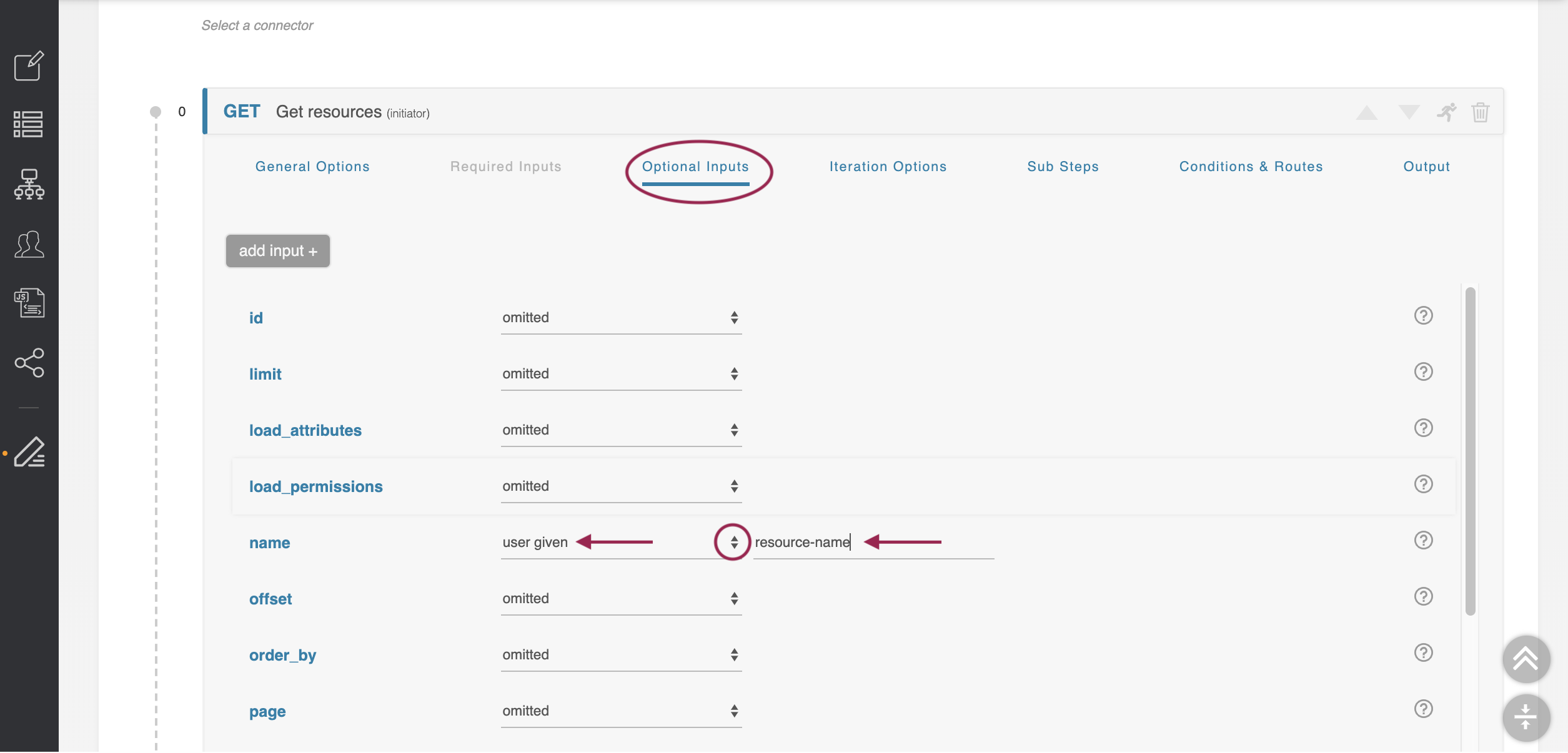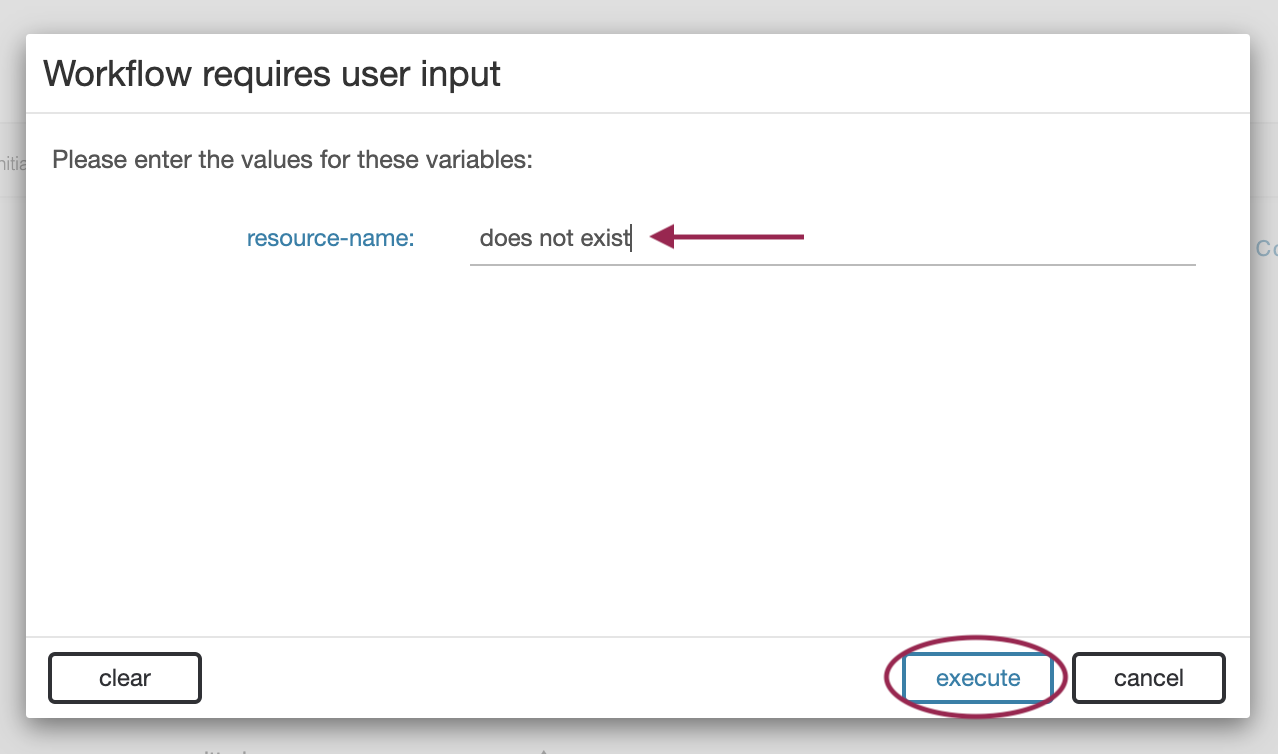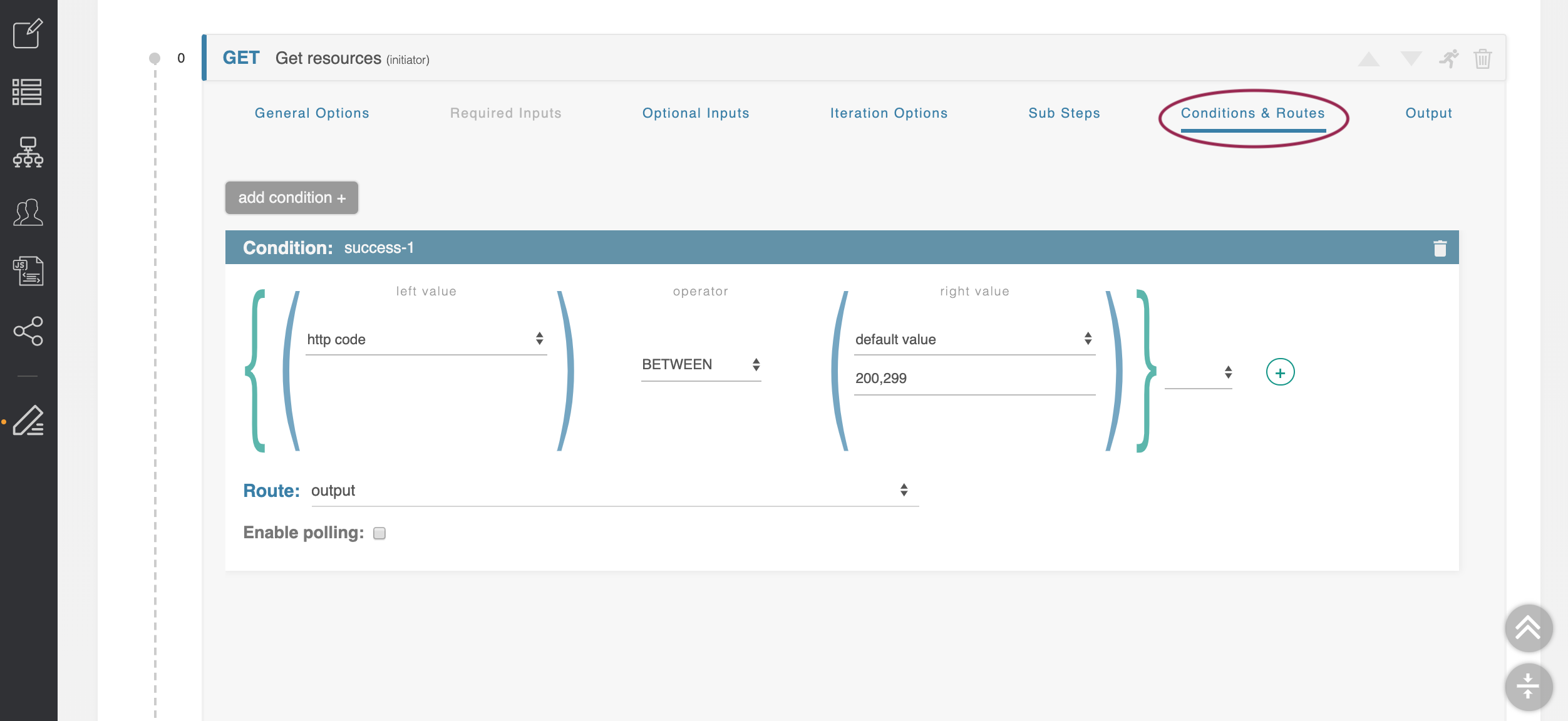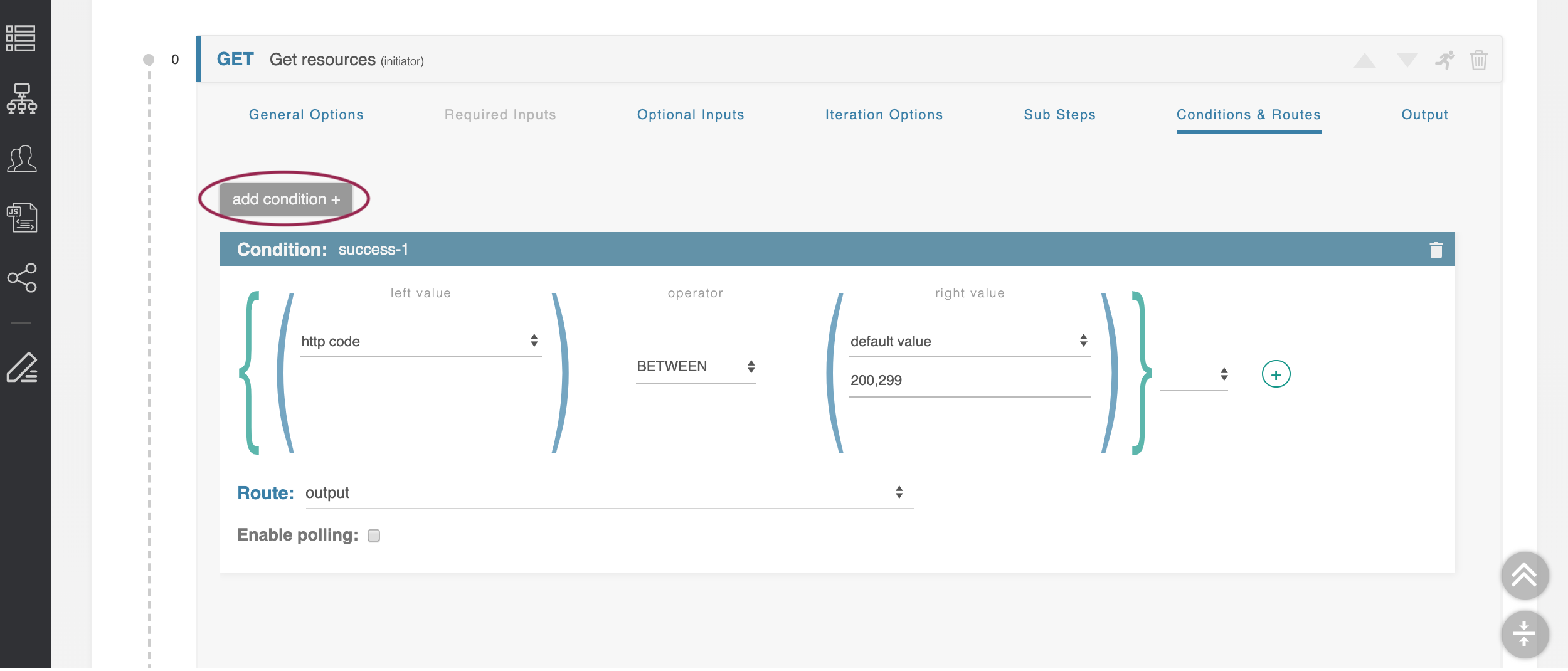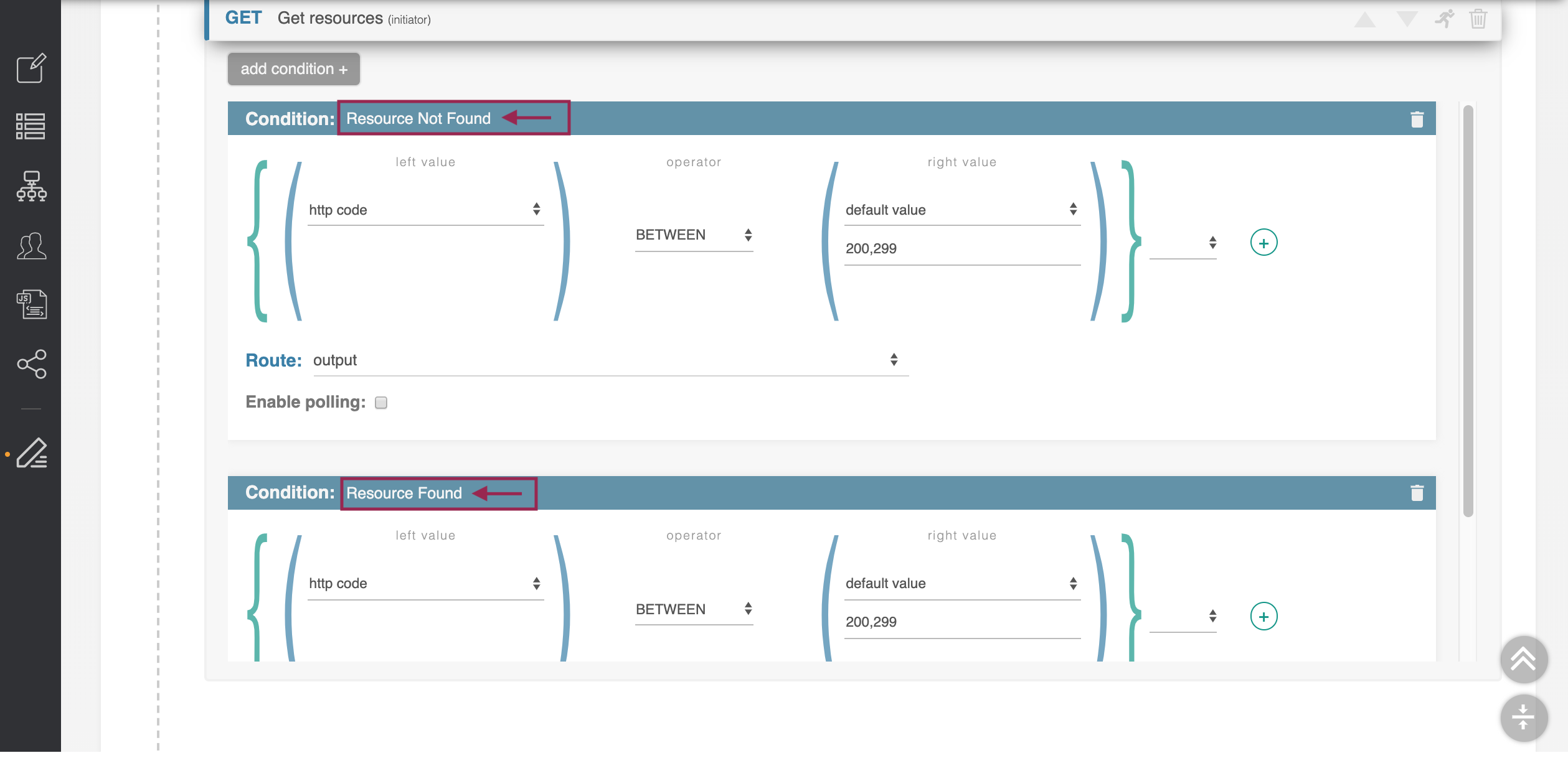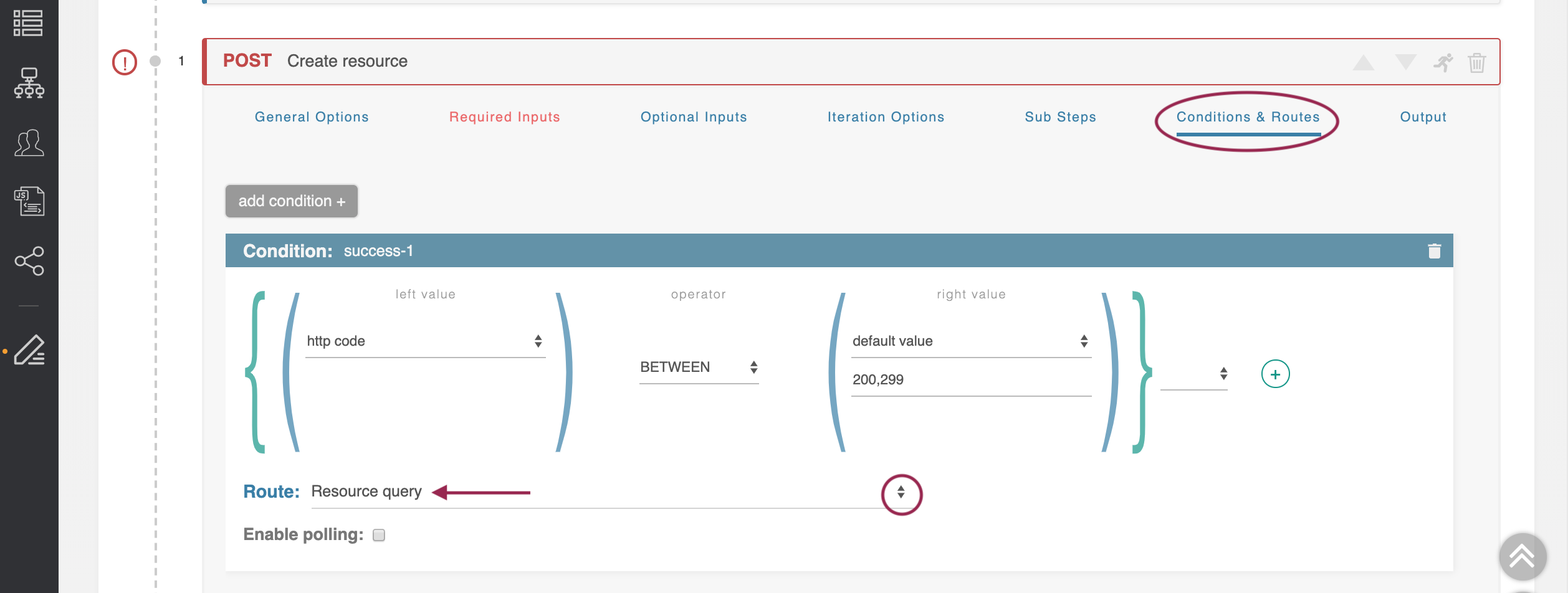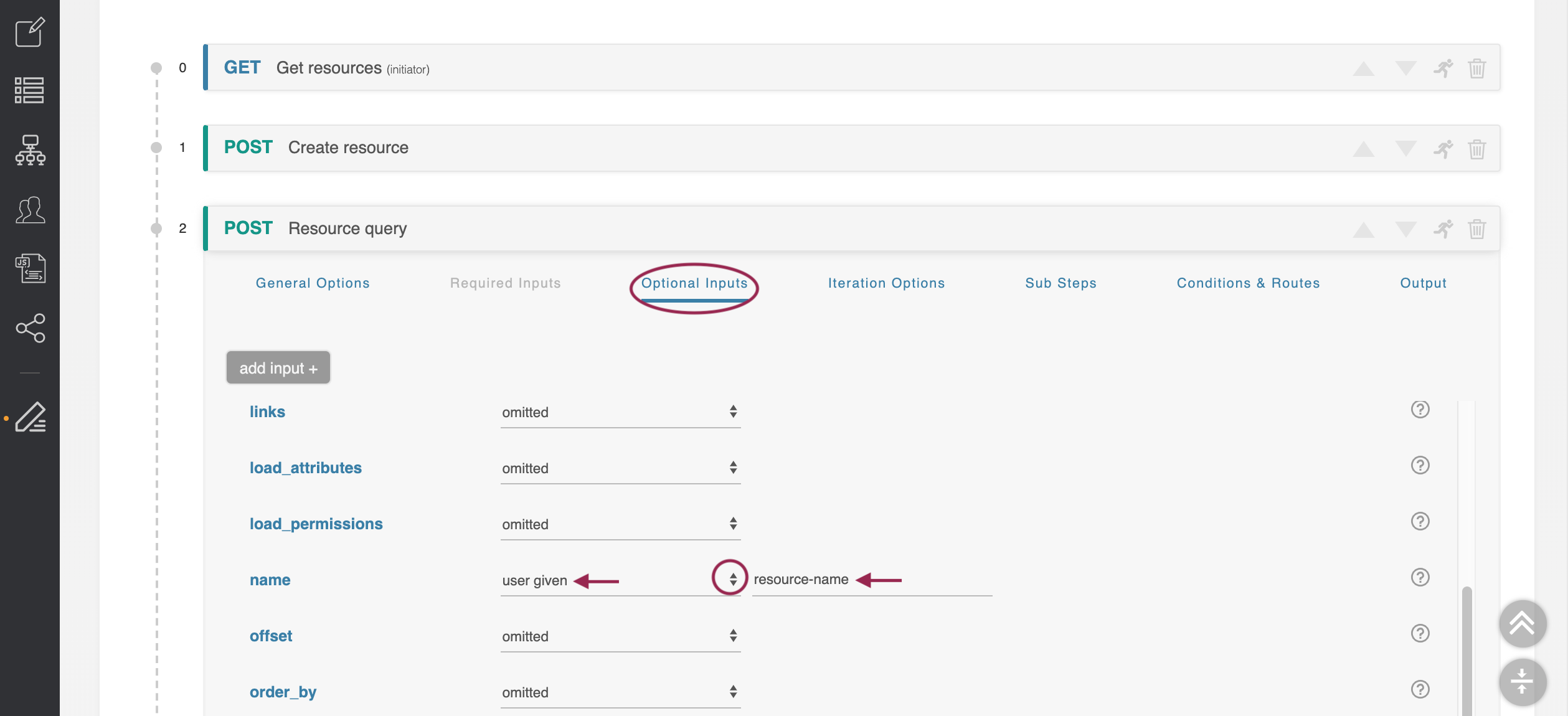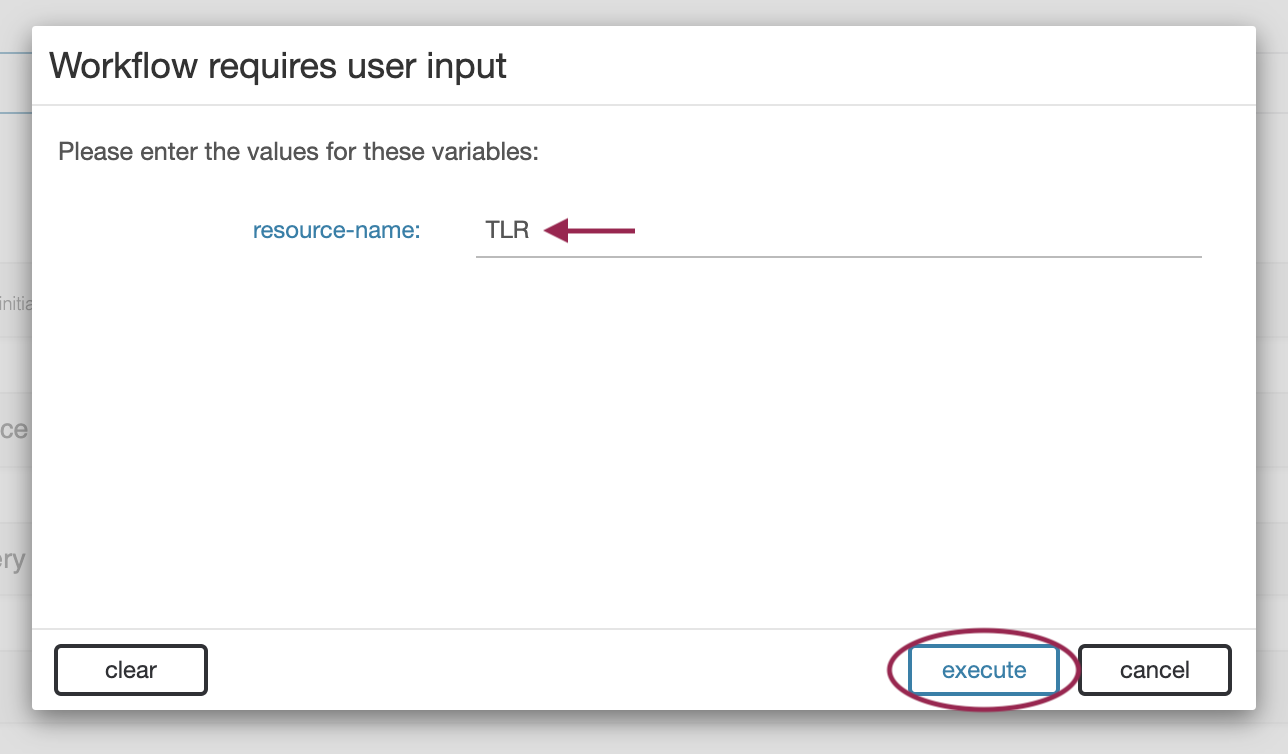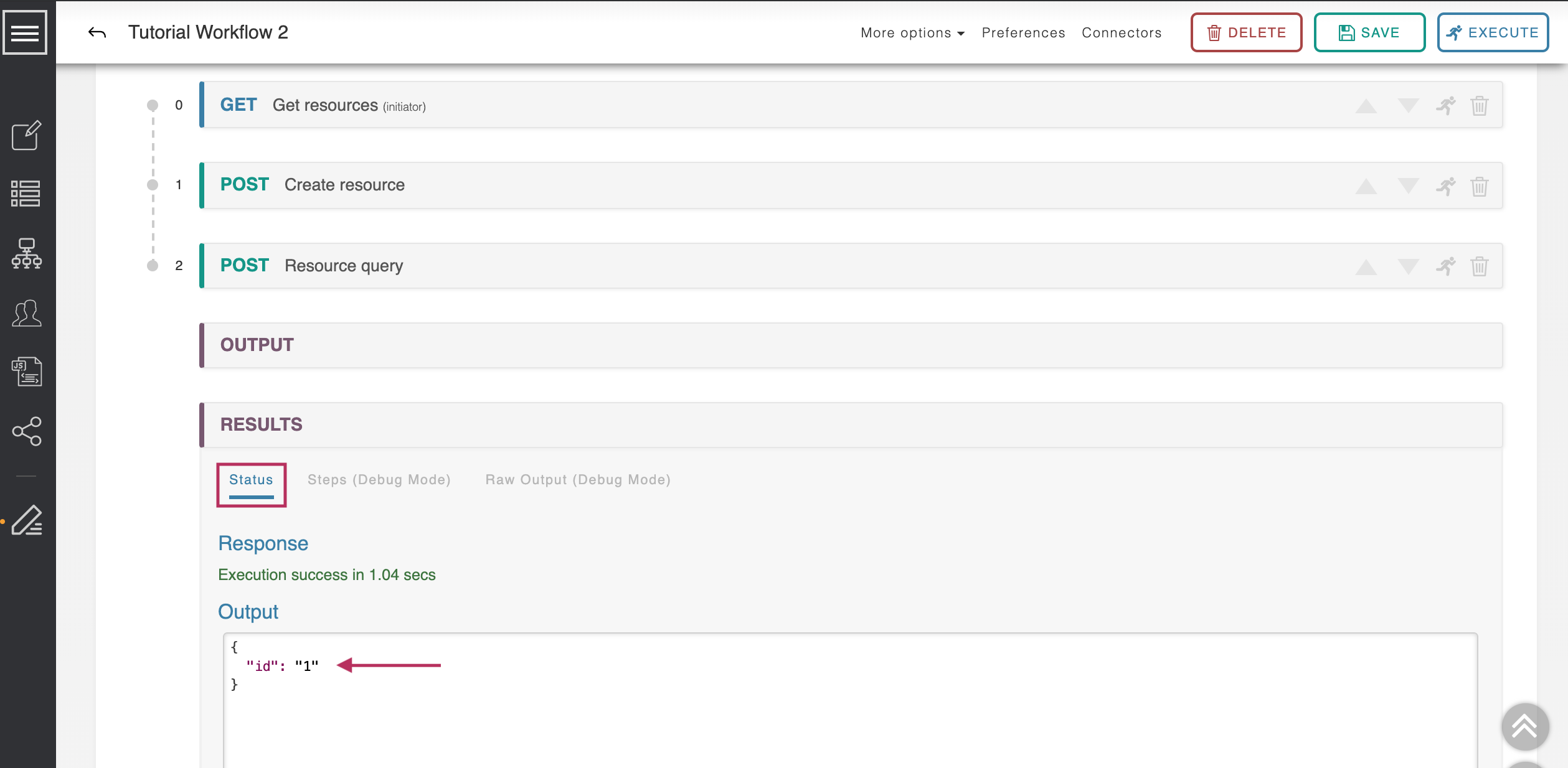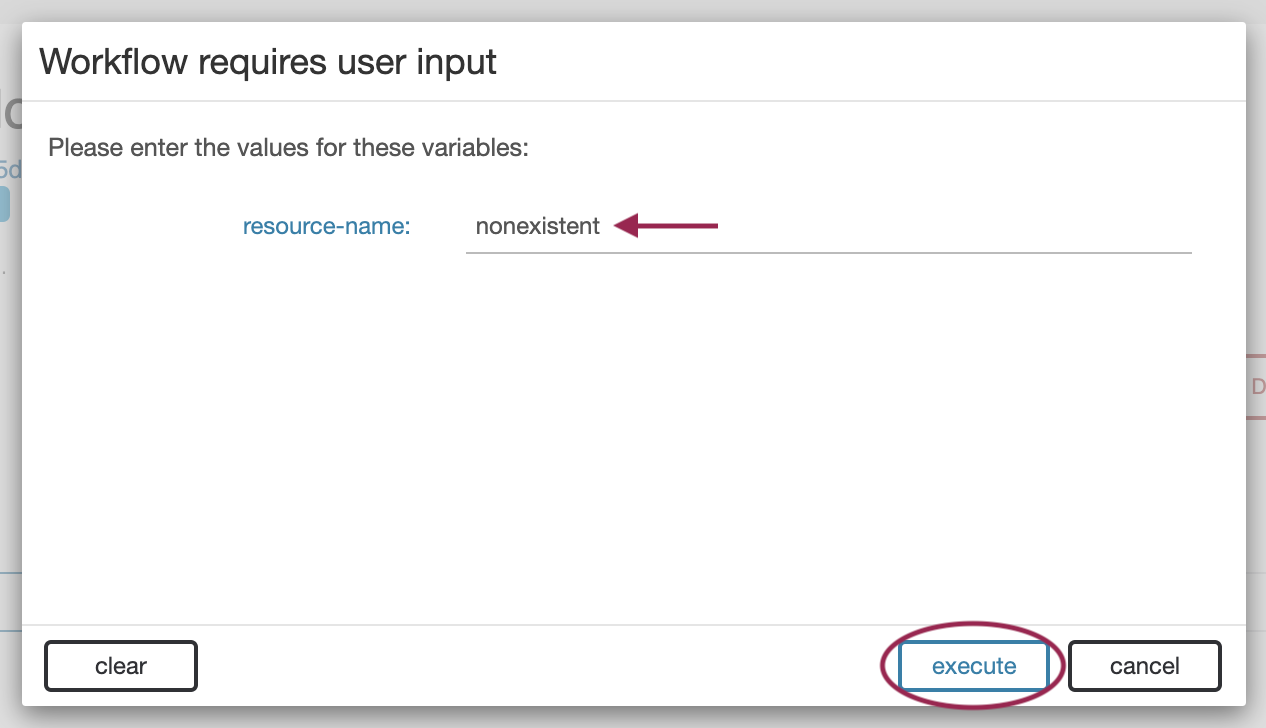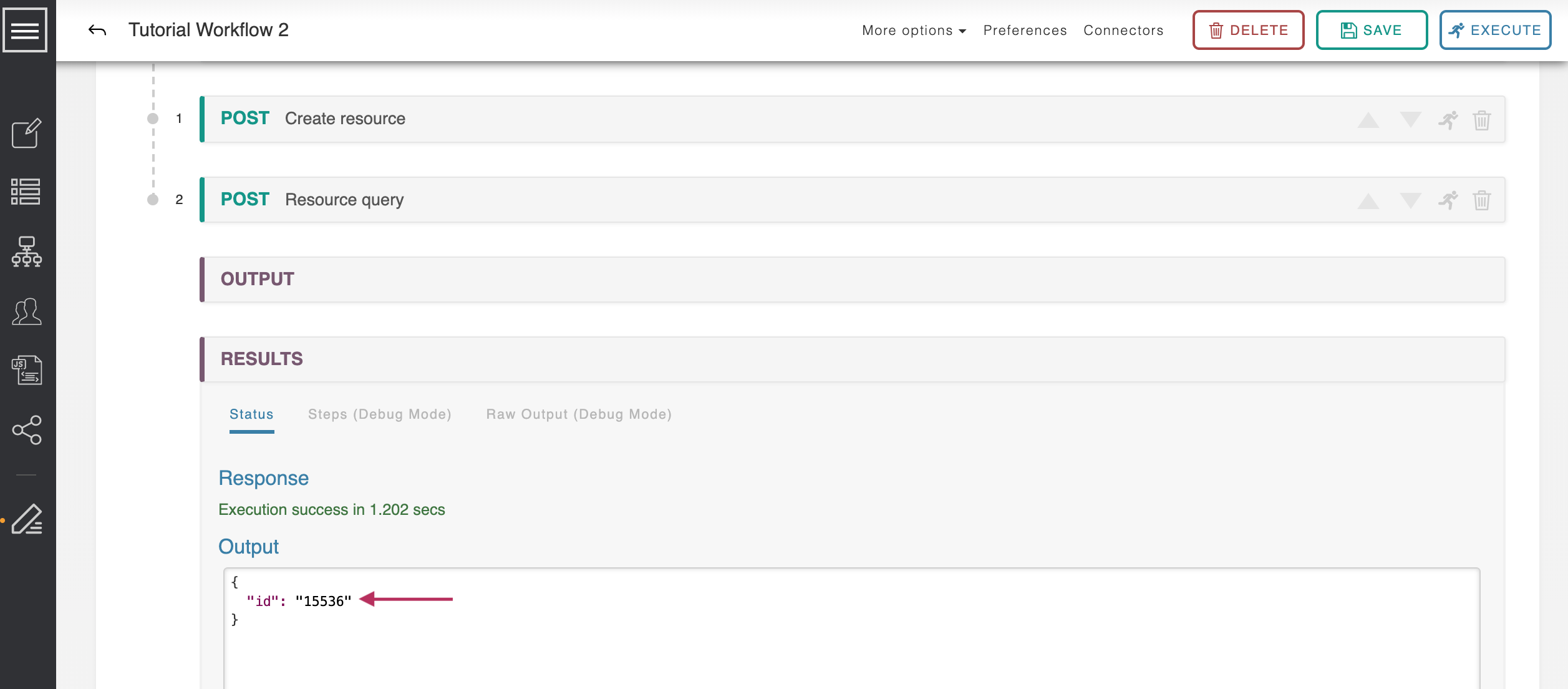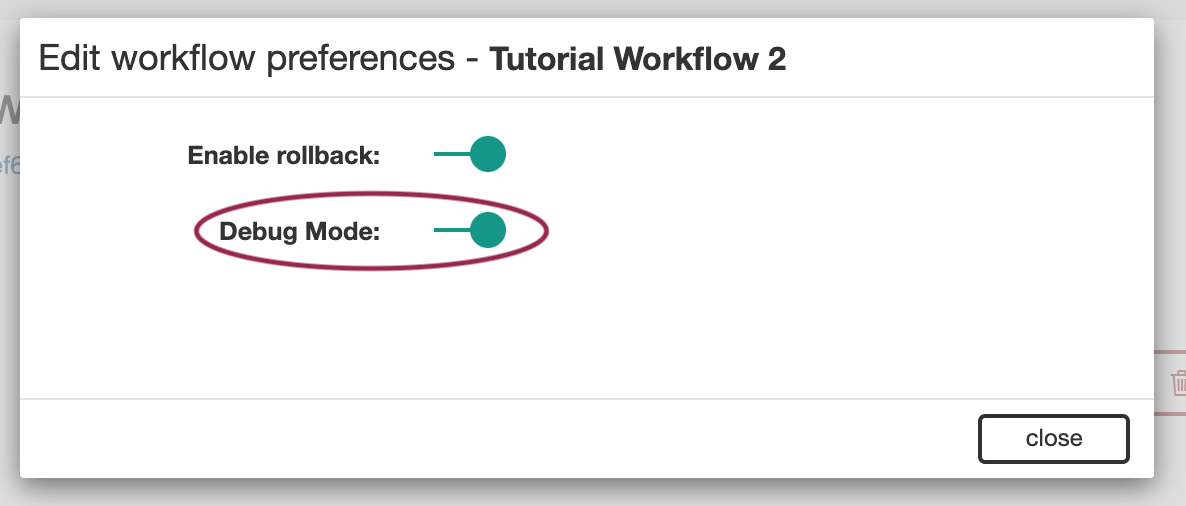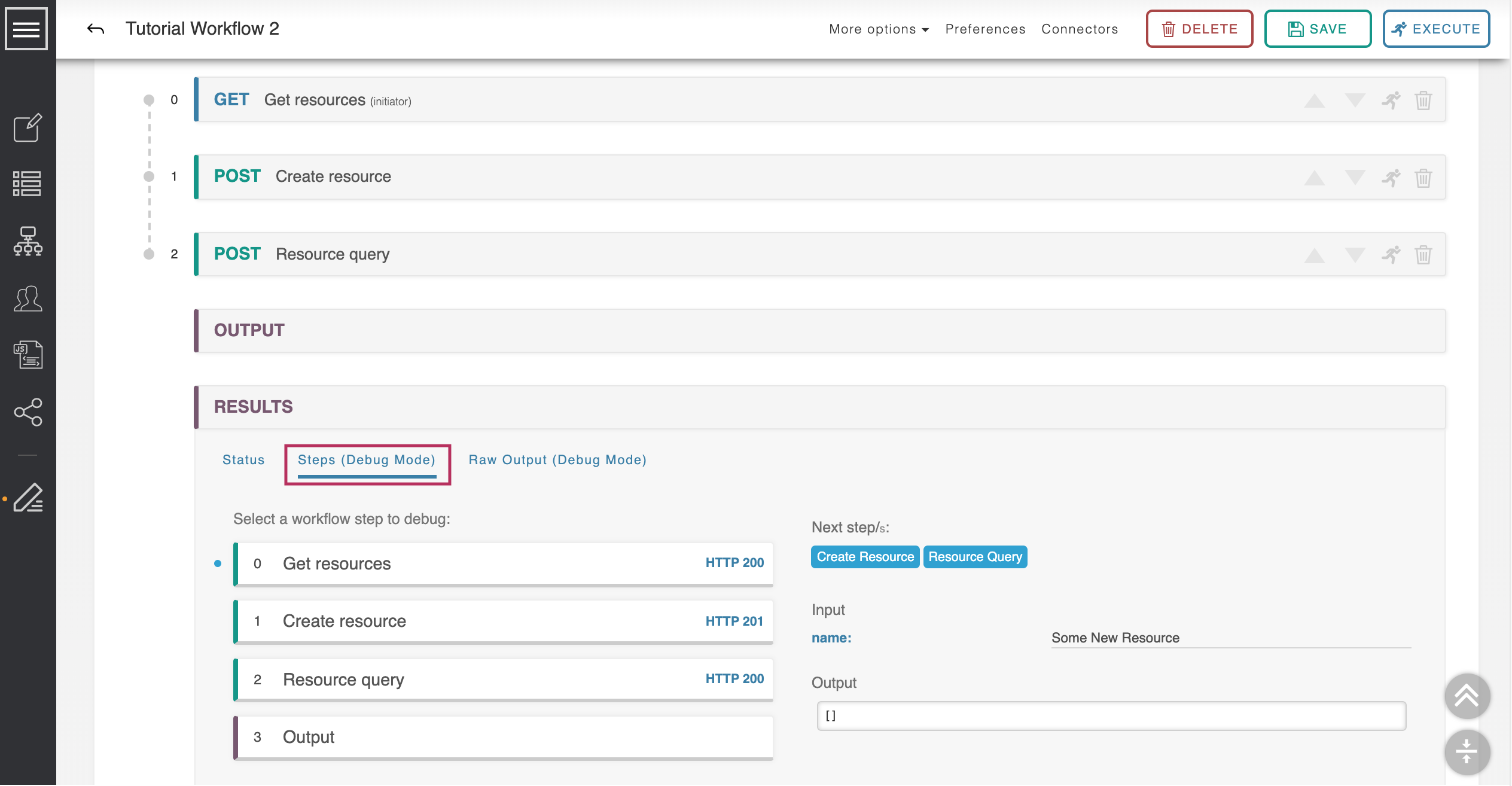Quick-Start Tutorial
...
Here are the steps needed to set up a complete, working ACP workflow. This tutorial assumes you have access to a working 6connect ProVision instance, but if not any other supported service can be used with minor conceptual tweaks.
Step 1: Open up a web browser and navigate to the login screen of the ACP installation. Your username and password will have been provided with your license information, or sent to you by your network administrator. Log in.
Step 2: Once you are logged in, select the “New Workflow” button from the center of the screen.
Step 3: Give your workflow a new name. New workflows are initially named “untitled”, and this name appears in the upper-left. Click “edit” and rename the Workflow “Tutorial Workflow.” Hit “close.”
Step 4: Configure a connector to your 6connect ProVision service. Click the “Connectors” button to the left of the “Save” button in the upper-right corner to bring up the Edit Connectors screen.
From the select box, pick “sixconnect.”
Name this connector “ProVision 1” and supply the URL for your ProVision instance and a valid username and password. Ue the ‘Test’ button to make sure the information is correct. Hit ‘Apply’ and then ‘Close.’
Step 5: Now it is time to add the first step of the Worfklow. From the “Add New Step” form in the main ACP area select the connector we have just made: “sixconnect - ProVision 1”.
The middle box of the form will pull in all the API Endpoint Families for this product. Pick ‘resources.’ The final box will pull in all of the specific endpoints belonging to that family. Pick “Get resources” and click the ‘+’ button to the right of the form.
The new step is added to the main ACP work area. An ‘Output’ step is automatically created below it.
Step 6: Click the blue ‘Get Resources’ step we just created. ACP has read in the API specification for this endpoint and will display forms for required and optional parameters. The ‘Get resource’ API call does not have any required parameters, so none are shown here. All optional parameters are initially set to ‘omitted,’ meaning they will not be included with the API call on this step.
To make this step do something a bit more useful, find the ‘Name’ parameter in the list of optional fields. Change its drop-down from ‘omitted’ to ‘default value.’ This means this parameter will be a constant, defined in the text box which appears to the right. Place the text ‘TLR’ in the box. This configures the API call to pull all the information about the resource named ‘TLR,’ which is the root of the ProVision resource hierarchy.
Step 7: While the previous step has fetched the data we need, we need to configure the Output step to return it to us. Click the blue ‘GET RESOURCES’ header to collapse the first step.
Then click the black ‘OUTPUT’ header to expand the output section. Currently, nothing is configured, and when the workflow is run it will return nothing.
Click ‘Add Parameter’ to add a new field to the output of this Workflow. Change the name from ‘output-param-1’ to ‘id’, and then select ‘Workflow Link’ from the adjacent drop-down. The form expands.
In ‘Workflow Link’ mode the third box contains all the steps of the workflow. You can select parameters from any call to return in the output, either in whole or in part. Select ‘Get Resources → (object).’ Clicking on the fourth and last box will bring up a listing of all the parameters returned by the Get Resources call.
Choose ‘id.’ This will return a single field, which is the id of the resource named ‘TLR.’
Step 8: Hit the ‘Save’ button in the upper-right.
Step 9: Hit the ‘Execute’ button next to ‘Save.’ After the processing timer finishes, a Results section appears with the response object: { "id": "1" }. We have queried the API for a resource named ‘TLR’ and have found that its resource id# is 1.
Step 10: For a more detailed look at what is going on, click on the ‘Preferences’ button between the ‘More Options’ and ‘Connectors’ links at the top of the screen. Turn ‘Debug Mode’ on. Save the Workflow and re-execute it.
This time the Results section expands into detailed reporting of what parameters were sent at each step, what data came back, and what routing path was taken. This will also show you what steps fail. Click on ‘Raw Output’ for the ‘Get resources’ step to see the raw response to our query. This is very helpful for finding errors.
Quick-Start Tutorial 2
2
This tutorial expands upon the concepts introduced in Quick-Start Tutorial 1. It is recommended to complete Quick-Start Tutorial 1 prior to starting this walkthrough, as you will be cloning the previous Workflow.
| Table of Contents | ||
|---|---|---|
|
| Note | ||
|---|---|---|
| ||
ACP Workflows may only be saved once they have at least a single working step, in order to ensure that data transmitted is valid for the connector and system. Before starting this tutorial, or any other workflow creation, ensure that you:
|
Step 1: Open the Workflow List
Now let's Now lets expand a bit on the previous Tutorial and introduce some more advanced ACP concepts.
Step 1: Navigate to your ACP instance and open the Actions Menu by clicking on the Menu icon in the upper-left. Find the ‘My Workflows’ area and click the ‘more…’ link.
Then click on the "Workflow list" option to view all Workflows.
Step 2: Clone Workflow from Tutorial 1
Find the “Tutorial Workflow” tutorial Workflow that you created by following the Quick-Start Tutorial 1. You can search by Name, filter by category, or sort the workflow list by Name, Category, or Created date.
Once you find your Tutorial 1 Workflow, click on the ‘Clone’ icon.
Enter . Click on the blue ‘Clone’ button and enter “Tutorial Workflow 2” as the new name. Click , then click ‘clone.’
The new Workflow will be created and added to the Workflow List.
Step 3: Open Tutorial 2 Workflow
From the Workflow list, find and click on the name Click “Tutorial Workflow 2” to open your new workflow.
This workflow is an exact copy of the previous tutorial, complete with all steps, settings, and connectors.
| Info |
|---|
If another Workflow is still open (such as Tutorial 1 Workflow), a warning may appear confirming that you wish to close the previous workflow. If any unsaved changes exist in the previous workflow, select 'Cancel', save the Workflow, close, and then re-open the Tutorial 2 Workflow. Otherwise, select "Close" and continue to the next step of Tutorial 2. |
Step 4: Edit Step Inputs
Click the ‘Get Resources’ step we created previously and scroll in Tutorial 1, and select the 'Optional Inputs' tab. Scroll down to the ‘name’ field we assigned previously to ‘Default Value: TLR’.
Change this field to ‘user given.’’ The form changes to allow you to name this user-given variable we just declared. Name it ‘resource-name.’
When done, save the Workflow.
Step 5: Execute Workflow with User-Given Variables
After saving the Workflow, click 'execute' to run Save the workflow and execute it.
A form pops up listing off all the user-given variables required to run the workflow. In this case, there is only one, but there can be as many as are needed.
Enter ‘TLR’ as the resource-name and click ‘execute.’
The resultant id is the same.
Step 6: Execute Workflow with User-Given Variables - Fail Condition
Execute the workflow again , - but this time enter in the name ‘does not exist.’
This resource obviously does not exist, and so the id returned is ‘null.’ Lets
Step 7: Add Workflow Step 2 - Create Resource
To adjust for a null return, we will instead alter the routing of the 'Get Resources' call, and create the resource if it is not found.
Step 7: Add a new step to the workflow by selecting the ‘sixconnect’ connector, then the ‘resources’ family, and finally the ‘Create Resource’ action. Then, Click "Add".
A second step, POST Create resource, will be added to the Workflow.
Step 8: Add Workflow Step 3 - Query
Add a third step to the workflow by selecting for Resource Query. Select the ‘sixconnect’ connector, then the ‘resources’ family, and finally the ‘Resource Query’ action.
Note this is different from the ‘Get Resource’ action we use as Workflow Step #1.
You should now have a 3-step workflow, with 'Get Resources', 'Create Resource', and 'Resource Query', like so:
If you tried to save or execute the Workflow at this point, a warning occurs indicating that an invalid input exists, and the save/execute fails. Although we have created the three calls we would like to occur, they still need condition logic added to handle the "does not exist" resource scenario.
Step 9: View Conditions & Routes
Step 9: Open up the first step , in blue, of the workflow. Scroll down to the , 'Get Resources', then select the ‘Conditions and Routes’ area at the bottomtab.
This is the area where the decision logic is stored. Currently, it is configured to proceed directly to the Output whenever the step successfully returns data.
We are going to add a second condition to handle the case where a resource is not found.
Step 10: Add a New Condition
From the Conditions & Routes tab under the 'Get Resources' step, click the ‘add condition +’ button Click the ‘+’ icon in the upper left of the Conditions area to add a new Condition. It
It is added at the bottom of the list. You should now see two Condition blocks, one named "success-1", the other "success-2".
Change Condition Name(s)
Edit the Condition names by clicking on the condition name (you should see a typing cursor), and typing in the new name(s).
Change the name of the first condition to read ‘Resource Not Found’ and , then change the name of the second condition to read ‘Resource Found.’
Step 11: Set 'Resource Not Found' Condition Values
Edit the ‘Resource Not Found’ condition so that the left value is set to ‘body’ and its property selected as ‘id’ property.
Set the operator for the ‘Resource Not Found’ condition to ‘NULL‘IS NULL.’
Set the ‘Route’ to ‘Create Resource’.
Step 12: Set 'Resource Found' Condition Values
Scroll down to the second Condition set, for 'Resource Found'. Change the route for the ‘Resource Found’ step to ‘Resource Query.’
When done, close the 'Get Resource' Step 13: Close the ‘Get Resource’ step by clicking on the step header.
Step 13: Set Create Resource Step Condition Values
Next, we set the parameters for Step 2, Create resource. Expand blue header, then expand the ‘Create Resource’ step by clicking on its green header. Scroll down to the two required parameters,
Update Required Inputs
Select the "Required Inputs" tab, and find its required parameters - ‘name’ and ‘type’.
Change ‘name’ to be ‘user given’, and as its value put ‘resource-name’, which is the same variable we defined in the previous step. The same value will be used for both parameters.
Change the ‘type’ input to ‘default value,’ and give it a default value of ‘resource’.
Update Conditions
Click on the 'Conditions & Routes' tab. Under the only available Condition, change the Route to the setting Scroll down to the Conditions area and change the Route for the only condition to be the final step, ‘Resource Query.’
Close the ‘Create Resource’ step.
Now that we have set the appropriate conditions and inputs for steps 1 and 2, saving the workflow at this time should automatically resolve any previous "invalid input" errors.
Step 14: Standardize Query Data
Expand the ‘Resource Query’ step. We have two previous steps which can route into this step under different conditions. This is a unification step, to standardize the data coming back. Scroll down to the optional parameters and find
Open the 'Optional Inputs' tab, then find the parameter ‘name.’ As in the previous step, make this parameter ‘user given’ with a variable name of ‘resource-name’.
This will use the same variable we’ve used in previous steps.
Close the ‘Resource Query’ step, and (optionally) save your changes.
Step 15: Format Output
Open Lastly, open the ‘Output’ step and change it so the third field to use 'Resource Query → (object)', so that we are taking the ‘id’ parameter from the ‘Resource Query’ step, and not the ‘Resource Get’ step.
Then, save your changes to the workflow.
Step 16: Execute Workflow - Resource Found Condition
Now that our conditions and paths for both Resource Found and Resource Not Found scenarios have been set, we can execute the Workflow for both scenarios.
First, let's re-execute with a standard 'Resource Found' condition:
At the top of the Workflow page, click 'Execute'.
Execute the workflow with 'TLR' entered for the 'resource-name' input.
In the "Results" section, click on the "Status" tab to view the response. Save and execute the workflow with the resource name ‘TLR’. As before, the returned id will be 1.
Step 17: Execute Workflow - Resource Not Found Condition
Execute the workflow again, but this time with a resource name “nonexistant’'nonexistent’.
As this resource is being created by the system, its id will be the next available.
Step 18: Execute Workflow - Verify Resource Created
Execute the workflow again, again with a resource name ‘nonexistant’‘nonexistent’.
This time the resource does exist, since as we created it on the last execution. Its id is unchanged.
Debug Mode
For additional insight into how Workflow Routing functions, turn on enable Debug Mode by clicking :
Click on the ‘Preferences’ 'Preferences link at the top of the screen near the Workflow options.
Under Edit Workflow preferences, enable 'Debug Mode' ('on' displays as green, with the toggle button to the right).
and enabling it. Running the workflow with Debug Mode on will show all the steps of the workflow and what order they were run, as well as if they were skipped. This
Executing the Workflow once again with a resource that doesn't exist ("Some New Resource"), then viewing the results tab "Steps (Debug Mode)", shows the condition path taken where the resource was not found and a new one created. This can be very helpful for debugging complex processes.
Additional Information
Continue on to the User Guide for detailed information on working in ACP:
ACP User Guide
Children Display depth 1 page ACP User Guide

